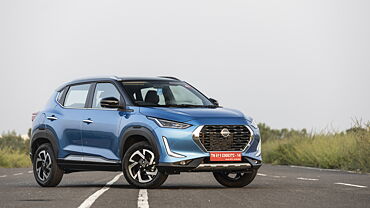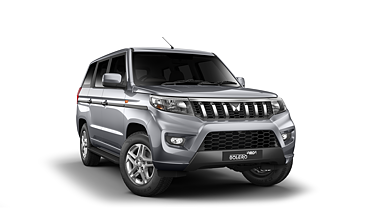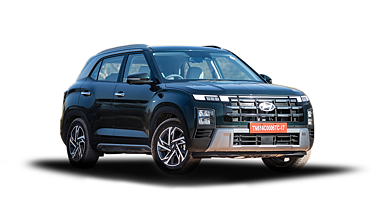Thin is in, clean is the buzz word today! Big, fat, hefty, gas-guzzlers like Hummers, and clean, fuel-efficient and compact cars are in demand. If you need any proof of the same, take a look at the success of Scrappage Scheme launched in Europe. Hyundai and Suzuki were laughing all the way to the bank and their export figures shot up tremendously. These two car makers, with India as their manufacturing hub for small cars, ensured that India’s cheap labour and low cost of production plus its fuel efficient models with new age engines made Europeans readily shelve their big long cars and opt for small compact cars.
In today’s article, we take a look at the different small cars in the market. Which is your favourite?
What Are These Cars?
New age cars are more than compact automobiles with engines strapped designed to deliver better mileage. These cars have new intelligent features, better aerodynamic designs, better safety features and even alternative fuel options. From the common man’s automakers like Tata Motors and Bajaj Auto to the premium luxury car makers like Audi, all are launching eco-friendly models to make the world a better place.
The Nano Rivals:
Bajaj Renault Nissan Small Car
Examining the fossil fuel cars, the first in queue are the Nano rivals. Tata Motors had launched world’s cheapest car Tata Nano in the Indian car market with a price tag of $2500. Tata Motors may find it tough to keep the costs down but that does not deter other auto makers round the world to launch its rivals.
The next in queue which is slated for launch in India by early 2012 is the Bajaj-Renault-Nissan’s ultra low cost car. According to the new partnership deal, Bajaj Auto will take care of the design, development and engineering of the car while Renault-Nissan will handle its sales and marketing and sell it under their brand name. Bajaj has recently announced the company is ready with its engine for the new ultra-low cost car. It claims that it is India’s most fuel efficient and least polluting engine. In fact, Bajaj said their car would give a mileage of 30 kilometres to a litre of fuel and emit less than 100 grams of carbon dioxide after a kilometre-long run! Currently, Nano, with a CO2 emission rate of 101 grams to a kilometre, is considered the least polluting car in India. It gives a mileage of 20 kilometres to a litre.
So far Bajaj or Renault Nissan have not revealed any designs of the model or even the concept of the car. Till date only brief details about the car are available from Bajaj Auto and an indication that it is in the process of developing the small car.
As India awaits the re-opening of next booking schedule for Tata Nano, it also awaits Bajaj’s new small car as its answer to bridge the gap between two-wheelers and four-wheelers.
The Geely iG Car Model
If it is manufacturing, how can Chinese be far behind! Chinese auto manufacturer Geely is now planning to launch IG or Intelligent Geely in the international market. As per the recent announcements from the company, Geely’s new car will be powered by 998cc MPFI petrol engine delivering 70BHp and 90nm of torque. Tata Nano or Bajaj’s ULC are powered by a 660cc engine. Geely also announced that the cost of the car will be kept around Rs. 1.3 lakh. However, the car will be a 2 door, 4 seater car with very limited space at the back seats. While Tata Nano seats 4 passengers comfortably, the Geely iG will not be able to accommodate rear passengers so comfortably. The Chinese automaker also intends to bring the electric variant of the car after the fossil fuel model is launched in 2012.
Geely has recently purchased the Swedish car brand Volvo and currently sells its cars in China, Europe and Russia.
Electric Car Models
Another important category of New Age Cars is the Electric Car. Let’s take a look at different options which are coming up.
Reva Electric Cars
Reva Electric is India’s oldest electric car manufacturer and is rapidly expanding its market share in the overseas market. The international market has already accepted the importance of electric cars and governments in the West have also started building complete support systems to make electric cars feasible in growing urban traffic.
Reva has already displayed its next generation electric car models for the Indian market at the Delhi Auto Expo 2010 held earlier in January. Reva will introduce NXR and NXG models in the Indian market in 2011. While NXR will be a two-seater, the NXG electric variant will be easily able to accommodate 4 passengers.

Tata Indica Vista Electric
Tata Motors is planning to launch its electric model of Indica Vista in Norway. Later, it intends to foray into the British market. The electric variant of Indica visa is not expected in the Indian market before 2014.
Apart from its own model, Tata Technologies has also signed a contract with a US car maker Genovation Cars Inc. to produce their electric car variant G2. The G1 model from the company is an electric version of Ford Focus. Tata Technologies will use research and development that went into making of G1 model.


Renault Twizy
Renault Twizy’s design and concept may change the way people look at electric cars. Renault displayed its Twizy model at the Delhi Auto Expo in January this year. Renault already has its electric hatchback model Zoe in the international market. It was earlier reported that Renault may be looking for partners to develop its electric car model but later Renault spokesperson denied it completely. However, Renault is definitely all geared up to explore the Indian market with its latest models including the electric variants.





Chevrolet Spark Electric
Chevy Spark Electric may be one of the first ones to enter the electric car market in India with a fresh breath. General Motors inked its MoU with Reva Electric to use its electric car engineering and design to develop its own electric variant of its hatchback model Spark. Now the project is already underway and Chevy Spark Electric may soon hit the Indian roads.
The Hybrid Models
Just as electric car models are on their beginner’s stage, Indian customers have yet to wake up to hybrid models. Honda launched its Civic hybrid but could not survive in the Indian market. One of the main reasons was its hefty price tag as the car was imported as a completely built unit.
India still lacks in hybrid technology and unless Indian customers get more aware about hybrid vehicles and their benefits, it is just unlikely for car makers to conjure healthy sales figures. Thus, it deters them to invest in setting up manufacturing units to manufacture cars with hybrid technology.
Honda Civic
Honda Civic hybrid has the privilege of being India’s first hybrid car model but it has yet to make its impression in the Indian car market. Honda launched the model in 2008 but now imports only against confirmed orders. It is strapped with SOHC iVTEC + IMA engine that delivers 95 bhp @ 6000 rpm and is mated with (Automatic) CVT transmission.

Toyota Prius
Toyota introduced its hybrid model Prius at the Delhi Auto Expo, and it is available for sale in India. Toyota Prius is known to be one of the most popular models amongst Hollywood stars. According to a top Toyota official, the company sees its hybrid sedan Prius in India as an answer to soaring fuel prices and growing concerns over emissions.

Conclusion
India is a booming market but so far the Indian audience have known the fossil fuel cars only. India still needs to wake up from its slumber to opt for new generation cars that are already making their mark in the international market. India also needs ample infrastructural support to adopt the electric cars and hybrid cars commercially. More importantly, the Indian auto buyer at present does not seem ready to pay more for a cleaner car. There is clearly a job for the government to subsidize this market, so that people are more inclined to book.
In spite of infrastructural short comings, automakers are not deterred to experiment in the Indian car market and launch their alternative fuel models to lure the customers of Gen-Next. Hopefully, the world will become a lot cleaner soon!



























